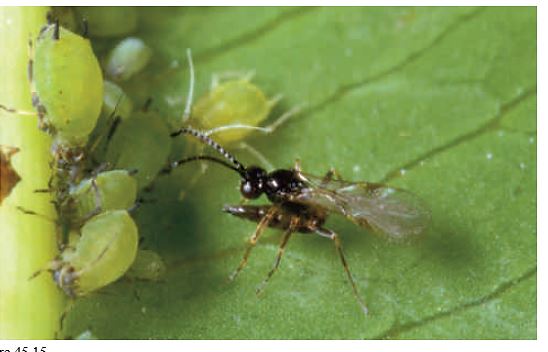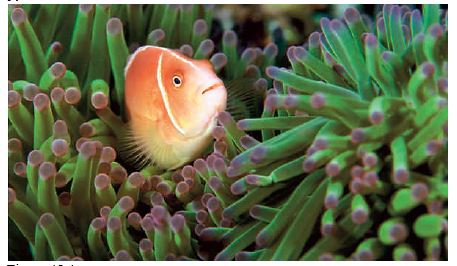Exam 45: Community Ecology
Exam 1: Invitation to Biology79 Questions
Exam 2: Life's Chemical Bases67 Questions
Exam 3: Molecules of Life87 Questions
Exam 4: Cell Structure106 Questions
Exam 5: Ground Rules of Metabolism69 Questions
Exam 6: Where it Starts—Photosynthesis69 Questions
Exam 7: How Cells Release Chemical Energy75 Questions
Exam 8: DNA Structure and Function61 Questions
Exam 9: From DNA to Protein64 Questions
Exam 10: Control of Gene Expression63 Questions
Exam 11: How Cells Reproduce77 Questions
Exam 12: Meiosis and Sexual Reproduction59 Questions
Exam 13: Observing Patterns in Inherited Traits95 Questions
Exam 14: Chromosomes and Human Inheritance76 Questions
Exam 15: Studying and Manipulating Genomes58 Questions
Exam 16: Evidence of Evolution55 Questions
Exam 17: Processes of Evolution74 Questions
Exam 18: Organizing Information about Species46 Questions
Exam 19: Life's Origin and Early Evolution60 Questions
Exam 20: Viruses, Bacteria, and Archaea56 Questions
Exam 21: Protists: The Simplest Eukaryotes61 Questions
Exam 22: The Land Plants66 Questions
Exam 23: Fungi52 Questions
Exam 24: Animal Evolution: The Invertebrates74 Questions
Exam 25: Animal Evolution: The Chordates71 Questions
Exam 26: Human Evolution51 Questions
Exam 27: Plant Tissues96 Questions
Exam 28: Plant Nutrition and Transport69 Questions
Exam 29: Life Cycles of Flowering Plants89 Questions
Exam 30: Communication Strategies in Plants72 Questions
Exam 31: Animal Tissues and Organ Systems79 Questions
Exam 32: Neural Control97 Questions
Exam 33: Sensory Perception69 Questions
Exam 34: Endocrine Control90 Questions
Exam 35: Structural Support and Movement72 Questions
Exam 36: Circulation58 Questions
Exam 37: Immunity73 Questions
Exam 38: Respiration78 Questions
Exam 39: Digestion and Nutrition98 Questions
Exam 40: Maintaining the Internal Environment73 Questions
Exam 41: Animal Reproductive System105 Questions
Exam 42: Animal Development72 Questions
Exam 43: Animal Behavior74 Questions
Exam 44: Population Ecology59 Questions
Exam 45: Community Ecology71 Questions
Exam 46: Ecosystems64 Questions
Exam 47: The Biosphere73 Questions
Exam 48: Human Impacts on the Biosphere67 Questions
Select questions type
 Figure 45.15
-The photograph above of the aphid and the wasp is an example of ____.
Figure 45.15
-The photograph above of the aphid and the wasp is an example of ____.
Free
(Multiple Choice)
5.0/5  (42)
(42)
Correct Answer:
E
Which of the following is NOT true of tropical communities?
Free
(Multiple Choice)
4.9/5  (29)
(29)
Correct Answer:
D
Four of the following statements are true of predator-prey coevolution.Which one is FALSE?
Free
(Multiple Choice)
4.9/5  (46)
(46)
Correct Answer:
D
Of the following four islands at the same latitude,which one likely possesses the fewest species?
(Multiple Choice)
4.8/5  (28)
(28)
Each species occupies a certain ecological __________,characterized by its interactions with the physical and chemical features and the other species living in it.
(Short Answer)
4.9/5  (28)
(28)
Which of the following represents an early stage in primary succession?
(Multiple Choice)
4.7/5  (32)
(32)
Choose the most appropriate answer for each.
-Secondary succession
(Multiple Choice)
4.8/5  (41)
(41)
All of the populations of different species that occupy and are adapted to a given area are known as ____.
(Multiple Choice)
4.9/5  (28)
(28)
Character displacement makes competing species less similar,which facilitates __________.
(Short Answer)
4.8/5  (33)
(33)
Respond to the following statements in reference to the five kinds of species interactions listed below.
-Lampreys feeding on other fish is an example of this.
(Multiple Choice)
4.9/5  (30)
(30)
An interaction in which one species benefits and the second species is neither harmed nor benefited is known as ____.
(Multiple Choice)
4.8/5  (29)
(29)
When a species lacking a defense mechanism looks like another well-defended species,it is called _____.
(Multiple Choice)
4.9/5  (30)
(30)
Insects that lay eggs in or on another insect,called ____________,are often used in biological pest control.
(Multiple Choice)
4.8/5  (32)
(32)
 Figure 45.4
-The relationship between the sea anemone and a pink anemonefish shown above is ____
Figure 45.4
-The relationship between the sea anemone and a pink anemonefish shown above is ____
(Multiple Choice)
4.9/5  (31)
(31)
Which statement is NOT generally characteristic of parasites?
(Multiple Choice)
4.9/5  (32)
(32)
Showing 1 - 20 of 71
Filters
- Essay(0)
- Multiple Choice(0)
- Short Answer(0)
- True False(0)
- Matching(0)